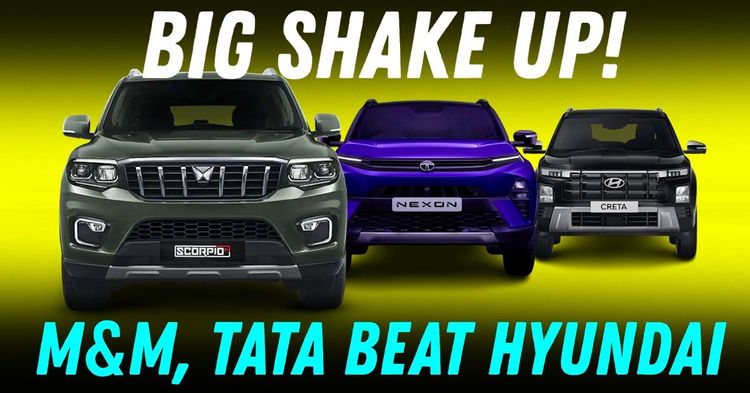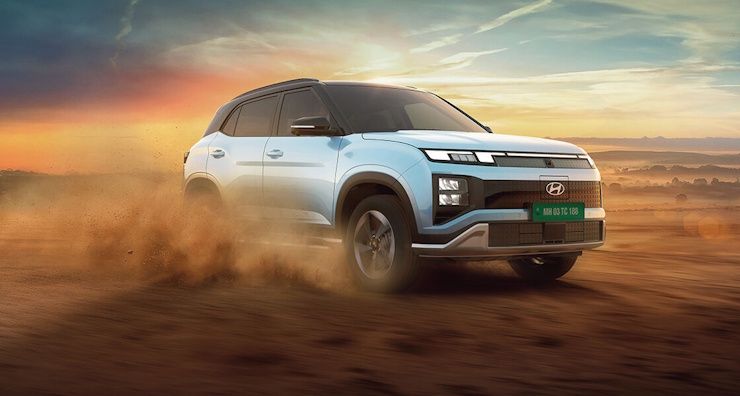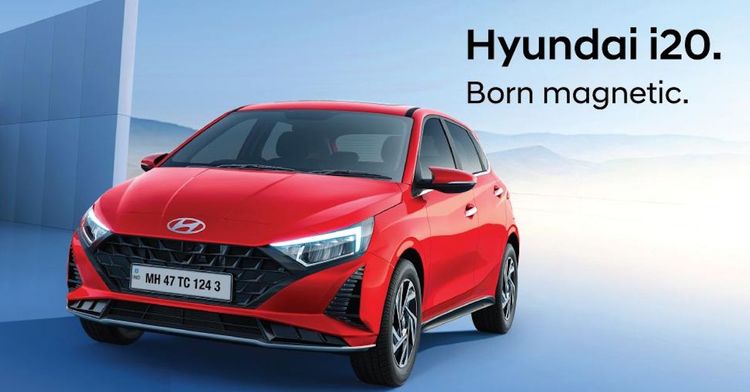Hyundai's Market Share Dips to 12-Year Low: Is It Ignoring the Sub-Rs. 10 Lakh Segment?


Hyundai Motor India has dispatched a special fact-finding team from its South Korean headquarters as its market share plummeted to a 12-year low, marking a significant setback for what was once the undisputed second-largest carmaker in the country.

According to recent data from the Federation of Automotive Dealers Associations (FADA), Hyundai's market share dropped to 12.47% in April 2025, down from 14.29% a year earlier, pushing the company to fourth position behind Maruti Suzuki, Mahindra, and Tata Motors.
The dramatic reshuffling of India's automotive hierarchy comes amid rising competition and shifting consumer preferences, with industry analysts pointing to Hyundai's relative neglect of the crucial sub-Rs. 10 lakh segment as a potential factor behind its declining fortunes.

Hyundai's descent from its long-held second position represents more than just a temporary setback. The company's market share has been gradually eroding, with its full-year figures for FY2025 showing a decline to 13.46% from 14.21% in FY2024. This downward trajectory has coincided with aggressive expansion by domestic competitors.
The April 2025 figures reveal a stark picture of changing dynamics in the Indian automotive landscape. While market leader Maruti Suzuki maintained its dominance with a 39.44% share (though down from 40.39% in April 2024), the real story lies in Mahindra's remarkable ascent to second place with a 13.83% market share, up significantly from 11.23% a year earlier.
Tata Motors, which has been steadily building momentum with its refreshed portfolio, secured the third spot with a 12.59% share, narrowly edging out Hyundai despite experiencing its own year-on-year decline from 13.61%.
Hyundai has been heavily relying on Creta volumes, and this was evident in April 2025 dispatches as well. Approximately 38% of Hyundai's volumes last month came from Creta alone, while other models in the portfolio are not performing as per expectations.
A report in AutoPunditz read.
The shifting fortunes in the automotive sector are largely attributable to the overwhelming consumer preference for SUVs, a trend that competitors like Mahindra have capitalised on more effectively than Hyundai.

Mahindra's success story has been built on robust SUV demand, with models like XUV 3XO, Scorpio N, Scorpio Classic, Thar, and Bolero driving sales. The company has also made significant inroads into the electric vehicle market with new offerings like XEV 9e and BE 6.
Tarun Garg, Whole-Time Director and Chief Operating Officer at Hyundai Motor India Limited, acknowledged the SUV trend, noting that "SUV contribution to HMIL's domestic sales [reached an] all-time high of 70.9% in April 2025." While Hyundai's Creta continues to perform well-topping sales charts in April with 17,016 units sold-other models in its lineup have failed to generate similar enthusiasm.

A closer examination of Hyundai's strategy reveals potential gaps in the crucial sub-Rs. 10 lakh segment, which remains a volume driver in the price-sensitive Indian market. Hyundai currently offers five models in this price bracket: Grand i10 Nios, Aura, Venue, Exter, and i20.
However, the company's approach to these models, particularly the i20, raises questions. Once a flagship product in the premium hatchback space, the i20 has seen its sales decline by 21% in FY2025. Despite being the second best-selling premium hatchback in the country, the model appears to have received less attention from Hyundai than its SUV counterparts.
Recent updates to the i20 have actually removed features rather than enhanced them. The 2025 model year update saw the elimination of the cooled glovebox from Sportz, Sportz (O), Asta, and Asta (O) variants, while puddle lamps were removed from the Asta variant, and tweeter covers disappeared from the Magna variant's front doors.

This apparent de-emphasis of the i20 stands in stark contrast to competitors who continue to refresh their offerings in the segment. Maruti Suzuki's Baleno, for instance, maintains its position as the bestselling premium hatchback with over 100,000 units sold in FY2025. But Hyundai has just made amends by now launching the Magna Executive trim of the i20.
Beyond the traditional players, Hyundai now faces intensifying competition from newer entrants. Kia, despite being a relative newcomer to the Indian market, posted an impressive 18.3% year-on-year growth in April 2025 with 23,623 units sold. The company is "bound to perform stronger with the launch of Clavis and supported by newly launched Syros," according to industry observers.

Similarly, MG Motor and Toyota recorded significant growth, with Toyota posting a remarkable 32.8% year-on-year increase in sales, firmly establishing itself in fifth position.
The electric vehicle segment, while still nascent, is also seeing shifts that may concern Hyundai. In April 2025, Tata Motors remained the EV market leader but saw its share plunge to 36% (from 61% a year ago), while MG and Mahindra gained ground with 28% and 24% market shares respectively. Hyundai's EV sales, though growing significantly with a 654% year-on-year increase, remain relatively small at 686 units.
As Hyundai's fact-finding team investigates the causes behind the market share erosion, industry experts suggest that revitalising its strategy in the sub-Rs. 10 lakh segment could be crucial to regaining lost ground.
While the company has achieved success with the Creta and is expanding its SUV portfolio, neglecting more affordable offerings risks ceding valuable market share to competitors who maintain a more balanced approach.

The anticipated introduction of the i20 facelift, expected later in 2025, could provide Hyundai an opportunity to reassert itself in the premium hatchback space. However, the company will need to address broader portfolio concerns if it hopes to reclaim its traditional position as India's second-largest carmaker.
With competitors showing no signs of slowing down and consumer preferences continuing to evolve, Hyundai faces the challenging task of striking the right balance between riding the SUV wave and maintaining strength across all price segments that have historically contributed to its success in the Indian market.